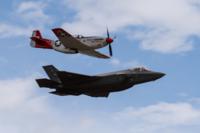When Nazi Germany attacked Stalingrad in August 1942, the assault on the city was as much a surprise to the Soviet Red Army as the German invasion itself. Soviet Premier Joseph Stalin expected the German army to continue toward Moscow, but the German High Command had other plans.
When the Germans approached Stalingrad, they also caught the Soviets there by surprise. The Red Army's entrenched defenses were prepared for attacks coming from other locations, and the only obstacle to the Wehrmacht's easy victory was a group of inexperienced teenage girls.
The Red Army's only likely regret is that it didn't have more soldiers just like them.

In June 1941, the Germans launched Operation Barbarossa, a massive invasion of the Soviet Union that captured huge swathes of territory and hundreds of thousands of Soviet prisoners. It was so successful that the onset of winter was the only thing that prevented the complete collapse of the Soviet government.
By 1942, the German Army was well-rested and ready to retake the offensive. After its assault on Moscow fell short the previous winter, it was forced to fall back, but Stalin fully expected another thrust for the Russian capital in the summer. He miscalculated the German plans.
Germany wanted to cut off the USSR's easy access to Lend-Lease supplies from the United States and its access to the oil fields of the Caucasus. A move to the south would accomplish this while dealing a blow to Soviet manufacturing capabilities. Stalingrad, being the namesake of the Soviet leader, was a prime target for propaganda value, too.
Like the rest of the Soviet Union's defenses, Stalingrad was unprepared for the Germans. When the Wehrmacht's Army Group Center approached the city from the north, it threatened to bypass all of the city's prepared defenses. In the northern area, the Red Army had only green volunteers from the 1077th Anti-Aircraft Regiment.
The 1077th was a poorly trained, undersupplied unit with no infantry to support them. Their only weapons were M1939 37mm flak guns, with which they were to defend Gumrak Airport from aerial bombardment. The unit was also fully manned by female teenagers, fresh from their high school graduation.

On Aug. 23, 1942, the German Blitzkrieg hit Stalingrad in full force, leveling much of the city from the air. When the 16th Panzer Division began to move in on the city from the north, it came face to face with the girls of the 1077th -- and their 37mm flak rounds.
The teenage defenders of Stalingrad had lowered the elevation of their anti-aircraft guns and pointed them right into the oncoming German offensive. It was the first resistance the Germans encountered in what would become a failed five-month fight for control of Stalingrad.
For two days, the 1077th fought shot for shot against hundreds of enemy tanks, thousands of enemy troops and aerial attacks from the German air force, the Luftwaffe. According to official Soviet records, the young women of the regiment destroyed or damaged 83 tanks, 15 armored personnel carriers, dispersed three battalions of infantry and down 14 enemy planes.
The Germans didn't discover who was manning the flak guns until they wiped them out, destroying 37 positions. After defeating the young gunners, the 16th Panzer Division referred to the 1077th's "tenacious fighting women," which is as close to a compliment one might find from an enemy during the Battle of Stalingrad.
-- Blake Stilwell can be reached at blake.stilwell@military.com. He can also be found on Twitter @blakestilwell or on Facebook.
Want to Learn More About Military Life?
Whether you're thinking of joining the military, looking for post-military careers or keeping up with military life and benefits, Military.com has you covered. Subscribe to Military.com to have military news, updates and resources delivered directly to your inbox.
















